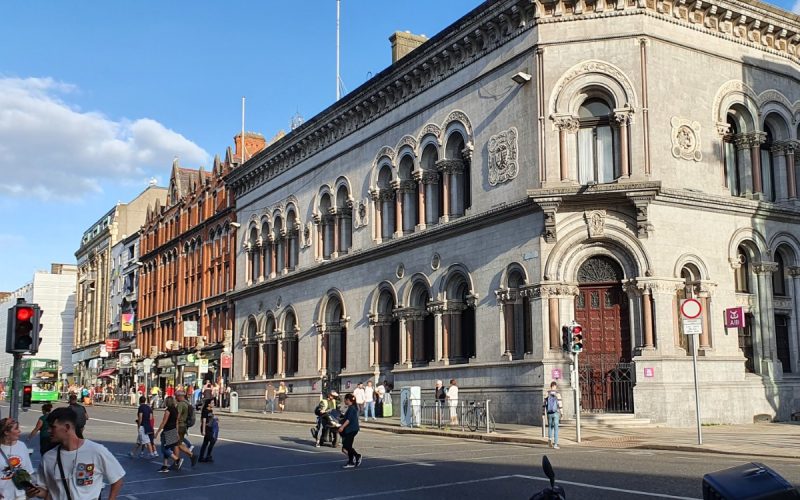Imagine a bank that once stood at the center of a national crisis, propped up by taxpayers’ money and the hope of a better future. This is the story of Allied Irish Banks—known as AIB—and today, it’s a story of renewal.
After more than a decade under the watchful eye of the Irish government, AIB has finally stepped out on its own. The last government shares were sold in a brisk, well-supported deal on June 16, 2025, marking the end of state ownership and heralding a new era for one of Ireland’s most storied financial institutions. The air in Dublin’s financial district is thick with anticipation—what comes next for AIB, and for Ireland itself?
ICE Unleashed: Trump’s Bold Deportation Blitz Sends Shockwaves Through Democratic Cities
Rewind to 2008, when the global financial crisis sent shockwaves through the world. In Ireland, the crisis hit hard. AIB, along with other major banks, found itself drowning in bad loans and collapsing confidence. The government stepped in, injecting billions to keep the bank afloat and protect the country’s financial system. For years, Irish taxpayers watched as their money kept the lights on at AIB, waiting for signs of recovery and a return to normalcy.
Fast forward to today. The final sale of the government’s remaining 2.06% stake in AIB has officially closed the chapter on state ownership. The transaction, completed at €6 per share, raised €305 million, adding to the nearly €20 billion already returned to the state from its original investment. While the government didn’t quite break even, the symbolic value of this exit is enormous. For the first time in 15 years, AIB is truly independent.
Minister for Finance Paschal Donohoe, who has overseen the final stages of this long journey, called it “an important milestone in delivering on the government’s policy of returning the banking sector to private ownership.” His words reflect a country eager to move beyond its crisis-era scars and embrace a future built on stability and growth.
Is the US Embassy in Israel Now a Frontline in the Middle East Crisis after Iranian attack?
Colin Hunt, AIB’s Chief Executive, welcomed the news with gratitude to Irish taxpayers. “This well-supported transaction is another important milestone in the process of returning the State’s investment in the Group and a normalisation of the share register,” he said. Hunt and his team are now focused on steering the bank into a new era, free from the constraints of state ownership and ready to innovate.
Los Angeles Protests Erupt: Thousands Defy Trump’s “No Kings” Day Amid Military Parade Chaos
AIB’s recovery has been remarkable. In recent years, the bank has reported strong profits and a healthy return on equity, thanks to improved efficiency and a renewed focus on customer service. Its digital transformation has positioned it as a leader in Ireland’s competitive banking sector, serving millions of customers and employing thousands of people across the country.
But the story of AIB is not just about balance sheets and share prices. It’s about the people who work there, the customers who trust it, and the communities it serves. The crisis-era bailout led to painful job losses and a national reckoning with reckless lending. Today, as AIB returns to private hands, there is hope for a brighter future—but also questions about the bank’s role in supporting Ireland’s ongoing recovery.
With the government no longer a major shareholder, AIB now has the freedom to operate with greater agility. This could mean more investment in technology, better customer offerings, and a sharper focus on shareholder value. But it also raises important questions about the bank’s responsibilities to society and its commitment to serving the needs of all Irish citizens.
For Dublin’s policymakers, the sale is a reminder of the lessons learned from the Celtic Tiger era. The government has been gradually reducing its stake in AIB since 2017, using the proceeds to strengthen Ireland’s financial resilience. Some experts argue that more should be done to protect public finances, especially in an uncertain global economy, but for now, the focus is on celebrating a hard-won milestone.
War heating up between Israel and Iran, what happened on ground; know the truth
AIB’s journey is a testament to resilience. Founded in 1966 through the merger of three historic Irish banks, it has weathered wars, recessions, and scandals. Its return to private ownership is not just the end of a chapter—it’s the beginning of a new story for Ireland’s banking sector.
To learn more about AIB’s journey from nationalization to independence, check out the official Department of Finance press release. For a deeper look at how Ireland’s banking sector has evolved since the crisis, the Financial Times offers insightful coverage of the final share sale.
Interested in Finance News , Read here





